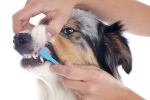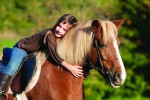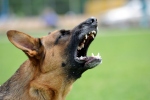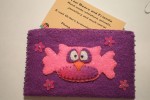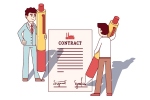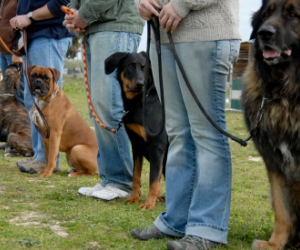 Bringing home a new puppy or pet can be one of the most exciting things that can happen to a household. It’s like having a new addition to the family except this one walks on all fours and doesn’t wear a diaper. But as much as you’d like it to be all fun and games from the moment they walk through the door, the reality of it is that you’ll most likely be spending the first few months and maybe even years training your dog.
Bringing home a new puppy or pet can be one of the most exciting things that can happen to a household. It’s like having a new addition to the family except this one walks on all fours and doesn’t wear a diaper. But as much as you’d like it to be all fun and games from the moment they walk through the door, the reality of it is that you’ll most likely be spending the first few months and maybe even years training your dog.
For a dog and an owner to have a good and healthy relationship, proper rules and boundaries need to be set; and the sooner those are established, the sooner everyone can enjoy each other’s company to the fullest.
The following are 5 important areas to train your dog in.
Housebreaking
Unless your dog will be living the entirety of his life outdoors, housebreaking is absolutely necessary. Potty training your dog can be one of the most frustrating lessons for everyone involved. No owner ever wants to discover the “surprise” their pet left behind on the living room carpet, kitchen floor, or worst, your bed.
Basics of housebreaking your pet include using a crate or some kind of containment that limits their space to a designated area of the house, using puppy pads or indoor sod trays, frequently taking your pet outdoors to relieve themselves and plenty of reward opportunities. Also, consistency is important, especially for puppies since the ability to “hold it in” doesn’t develop until after 12 weeks.
No Biting
It’s a common question that family, friends and even strangers ask a dog owner when they come in contact with the pet, “Does he bite?” While biting is usually an instinctive reaction older dogs have to a situation, it’s more a frequent occurrence with puppies and usually considered their form of play and exploration. But if this behaviour is not dealt with earlier on, that kind of play can become dangerous when they’re much older and bigger with sharper teeth and stronger jaws.
Let your pet know that biting is not ok from day one. Every time you feel their teeth start to sink into your skin, stop all activity at once and reprimand them in a firm, but calm voice. You can put your pup in a “time out” or completely stop the play and only resume after a few minutes and once the biting and nipping has ceased. Let them know there are consequences for this action.
Socialization
It’s important that your pet knows how to act proper not only around you and in the home, but also around other people and pets as well. Experts recommend exposing your dog to different people, children of all ages, other pets and animal species, objects (especially moving and interactive kinds) and various locations such as the park or a pet-friendly outdoor restaurant. Doing so will make your dog more sociable as well as accustomed to different environments and taking your pet to a relative’s home, to the vet or on vacation will be an enjoyable experience.
Separation
It’s no question that strong connections and bonds will develop between a pet and their owner, but for some pets this connection can sometimes be too strong to where they develop separation anxiety every time their owner has to leave them home alone. Separation anxiety could lead to destructive behaviour, stress, aggression, and even depression.
Owners can’t be with their pets 24/7 and it’s important that dogs know this and feel confident and assured of your return whenever you have to leave them. A few things you can do to make parting easier are:
- Take your dog out for a walk before you leave so that he can release any built up energy, he’ll be in a more restful state and might even take a nap while you’re gone
- Don’t make good-byes long and drawn out, at times you can even try leaving without saying good-bye to your dog
- Do practice departures for 5, 10, or 30 minutes to get your dog used to the fact that leaving him along is a normal occurrence
Obedience
If you want to be an effective leader and master to your dog then obedience training would most likely be at the top of your “To Do” list. After all, if you can’t get your dog to obey your commands then teaching or training him to do anything else for that matter will be impossible. There are several ways you can go about training your dog to be an obedient and submissive pet. Both of you can enroll in formal dog training classes, take private training lessons with a professional dog trainer, or there’s the DIY approach which would entail reading up on a lot of dog books, watching dog training videos on YouTube and researching the web for all other inquiries.
When you’re able to build a strong foundation in all of these five areas then you can look forward to many bright and happy days ahead with your dog. Also enrolling your dog in puppy classes can be a great option.

